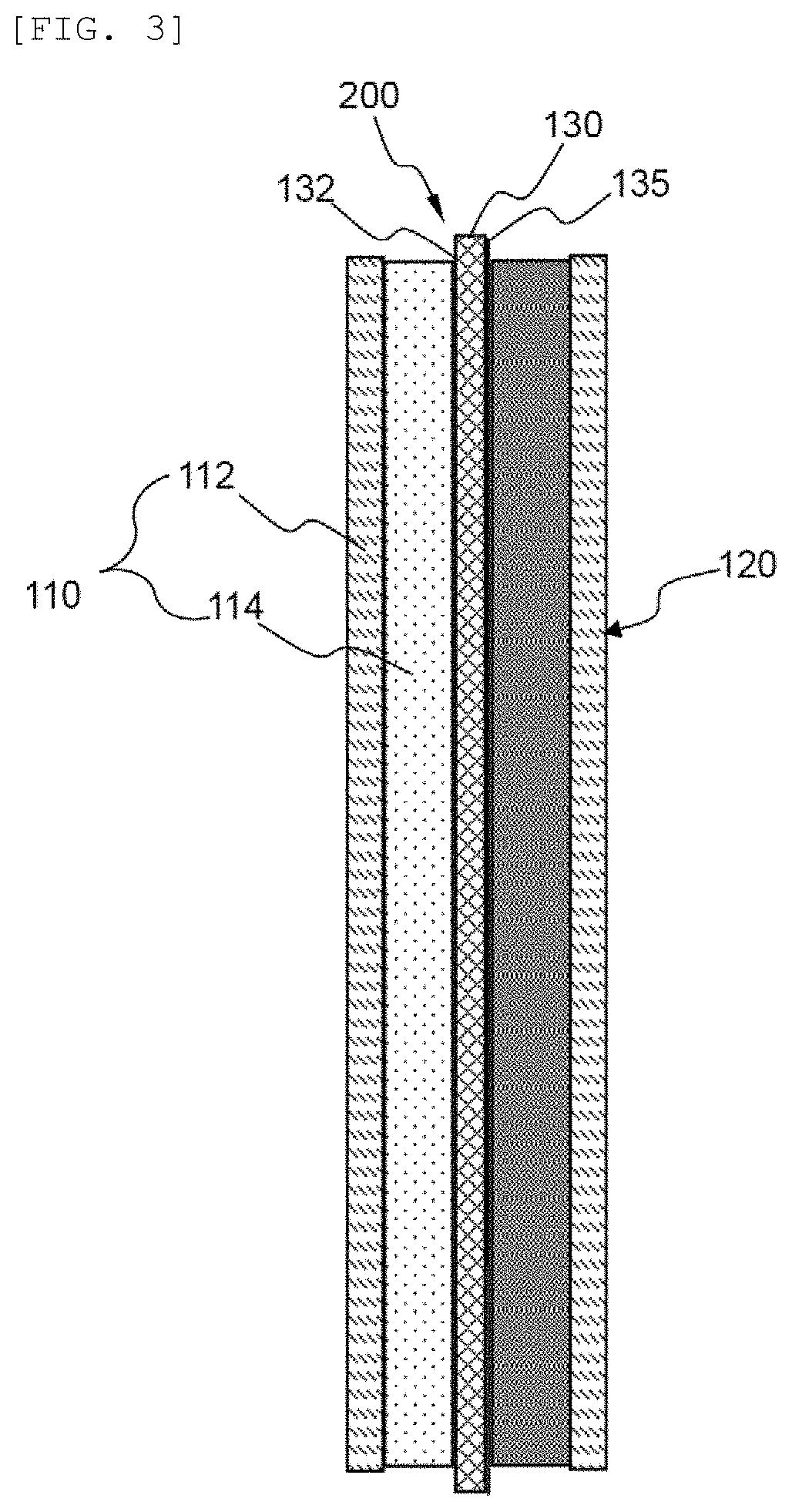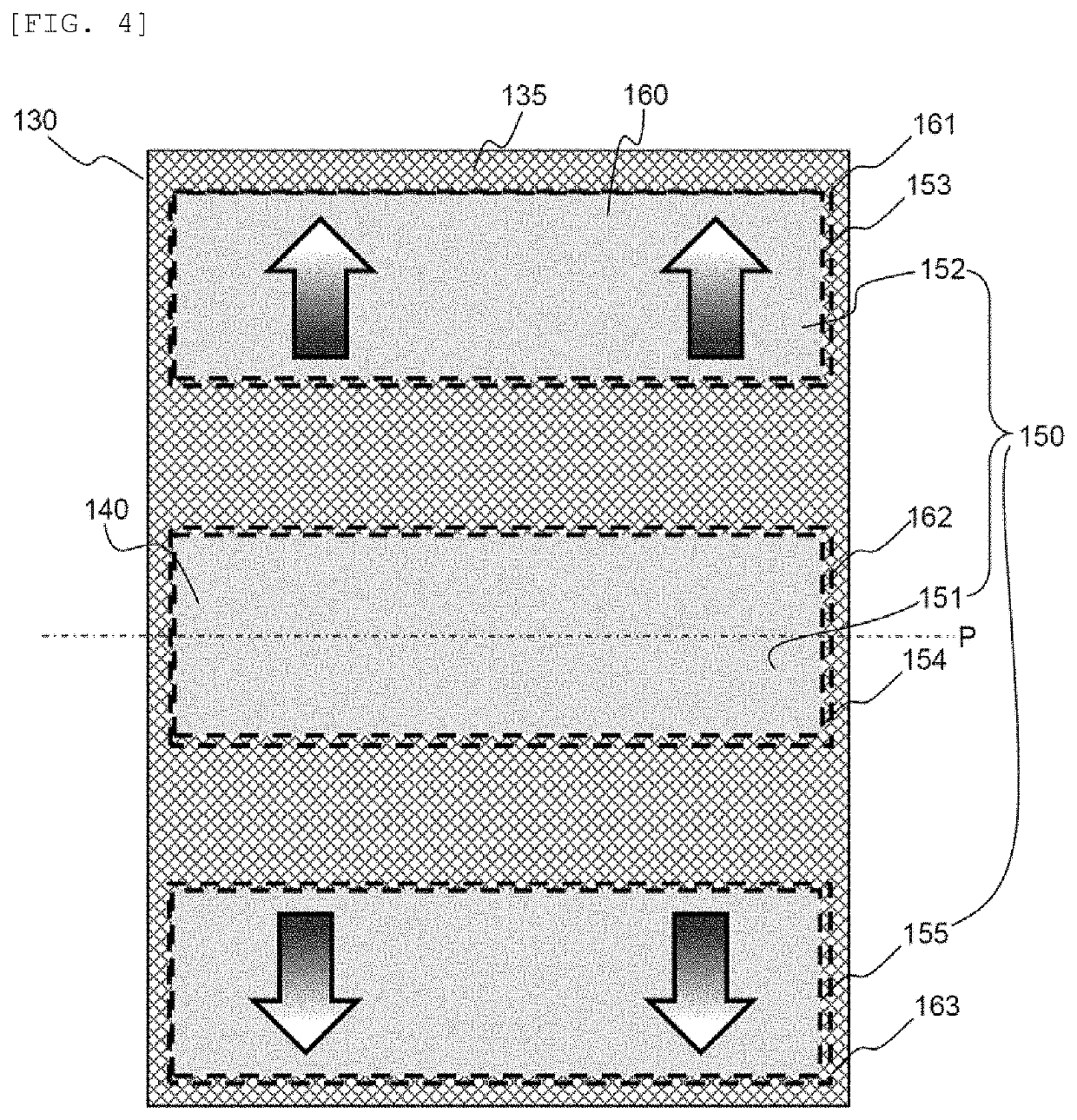Electrode assembly including electrode and separator partially bonded to each other
a technology of electrolyte and separator, which is applied in the field of electrolyte assembly, can solve the problems of deterioration of electrolyte impregnation, difficult to readily discharge a gas generated during a process, and deformation of the electrolyte assembly, so as to achieve the effect of reducing internal resistance and facilitating discharg
- Summary
- Abstract
- Description
- Claims
- Application Information
AI Technical Summary
Benefits of technology
Problems solved by technology
Method used
Image
Examples
embodiments
[0083]Hereinafter, the present disclosure will be described in detail. Prior to the detailed description, it should be appreciated that terms and words used in the present specification and claims are not to be construed as a general or dictionary meaning, but are to be construed to meaning and concepts meeting the technical ideas of the present disclosure based on a principle that the inventors can appropriately define the concepts of terms in order to describe their own inventions in the best manner. Accordingly, description of this specification and illustrations of the drawings are merely given as an exemplary embodiment of the present disclosure and are not intended to represent all technical ideas of the present disclosure. Therefore, it should be understood that various equivalents and modifications can exist which can replace the embodiments described at the time of application.
[0084]FIG. 2 is a side view illustrating an electrode assembly for secondary battery according to ...
example 1
[0104]A cathode containing a cathode active material and an anode containing an anode active material were prepared, and a separator including a porous coating layer containing SiO2 particles and PVdF and having a thickness of 5 μm formed on both surfaces of a polyolefin substrate having a thickness of 20 μm was prepared. A corona discharging process was performed to the separator along a pattern such that a non-processed area was formed on a central portion 26 mm away from each of both ends. The separator was interposed between the cathode and the anode to manufacture an electrode assembly having a size of 84 mm×84 mm.
example 2
[0109]A cathode mixture slurry was prepared by adding a cathode active material (e.g., LiCoO2) with a conductor and a binder (PVdF) at a weight ratio of 95:2.5:2.5 (active material: conductor: binder) to a solvent NMP (N-methyl-2-pyrrolidone), and an anode mixture slurry was prepared by adding synthetic graphite of 95 wt % as an anode active material, a conductor (Super-P) of 1.5 wt %, and a binder (PVdF) of 3.5 wt % to a solvent NMP and then coated, dried, and compressed on aluminum foil and copper foil, respectively, to prepare a cathode and an anode.
[0110]A separator was prepared using porous polyethylene, and surfaces of both sides of the separator facing the cathode and the anode were modified by a corona discharge. The porous polyethylene separator was interposed between the cathode and the anode and then heated and compressed such that a bonding interface between the electrode and the separator bonded to each other was partially bonded to 90% of the size of an entire interfac...
PUM
| Property | Measurement | Unit |
|---|---|---|
| temperature | aaaaa | aaaaa |
| temperature | aaaaa | aaaaa |
| thickness | aaaaa | aaaaa |
Abstract
Description
Claims
Application Information
 Login to View More
Login to View More - R&D
- Intellectual Property
- Life Sciences
- Materials
- Tech Scout
- Unparalleled Data Quality
- Higher Quality Content
- 60% Fewer Hallucinations
Browse by: Latest US Patents, China's latest patents, Technical Efficacy Thesaurus, Application Domain, Technology Topic, Popular Technical Reports.
© 2025 PatSnap. All rights reserved.Legal|Privacy policy|Modern Slavery Act Transparency Statement|Sitemap|About US| Contact US: help@patsnap.com



